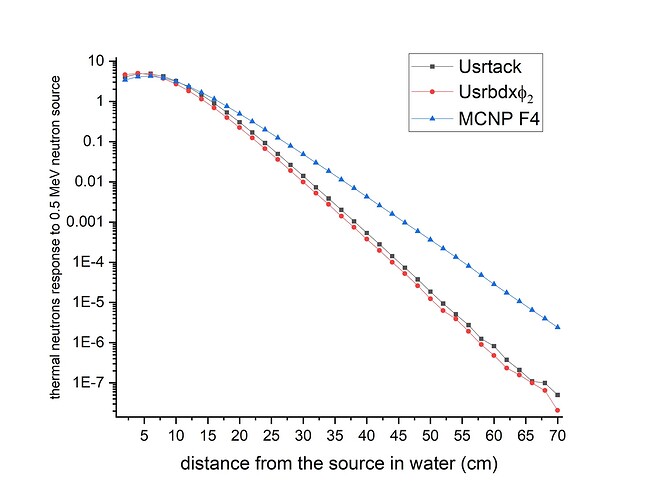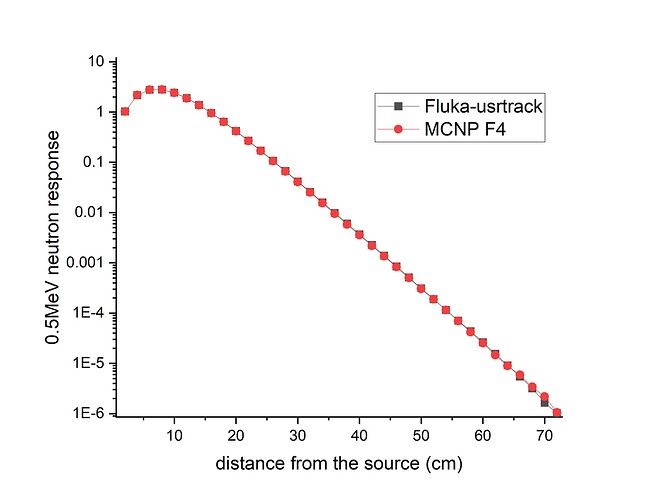-The problem is a neutron source in a water pool.
-I compare between Fluka and MCNP thermal neutron flux (neutrons below 1eV)
-I use different neutron source energies and measure the thermal flux at different distances from the source inside water. I use ENDF library for both simulations.
-I used F4 for MCNP, and for Fluka I used both Usrtrack and USRBDX (integrated over angle).
-At high neutron energy sources (like above 4MeV), the two results are close although they are not the same exactly, but at low neutron source energy (e.x. 0.5 MeV) I found discrepancy in results, look at the graphs for 0.5MeV and 8MeV neutron sources.
Here is what I found, I was using the built-in WATER compound in Flair, which gave the mentioned discrepancy. I then composed a new water compound out of hydrogen-1 + oxygen-16. The results match fine now (look at the graph).
My question, is why does the built-in material give non-accurate results?
Maybe if you add your *.flair file we can check where the issue could be
attached the two flair files
waterr.flair (11.4 KB)
WATER.flair (11.4 KB)
Dear @soulaiman
as it is mentioned in the FLUKA manual, the code assumes that the default HYDROGEN material is bound to WATER (see note 6)
The reason behind this logic is that Hydrogen, for the vast majority of shielding materials appears in the form of water. Therefore not having it bound to water it will lead to wrong results. However if you want to treat it as free gas then you can unbind it as you already did in your second example or by using the setting “unbind” to the Sab WHAT(3) of LOW-PWXS card for HYDROGEN
As far it concerns your simulations, since you are dealing with WATER is more correct to enable the binding also for MCNP with the use of the MT card.
Thanks for the reply and clarification. It makes sense now.


